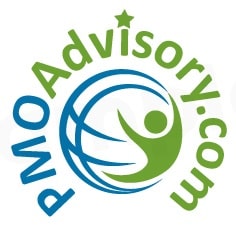
Risk is inevitable, but don’t lose hope… we can manage project risk and use our skills to be successful with project uncertainty! As we have experienced, the project risks that we uncover are a key part of project management. What I often say is, if we didn’t have project uncertainty (risk) than we would not need project managers to manage projects. Project management is not just about creating a plan. If so, it could be executed without a project manager (PM). The PM performs the project management juggling act, juggling the triple constraint (time, cost, and scope). You can watch me demonstrate it here: https://www.youtube.com/watch?v=RVTm66elAQQ. How did I do this? First, I was taught how to juggle scarfs by a Barnum Bailey clown instructor (of course I went to a professional mentor to learn this new skill). Second, and perhaps most importantly, how I juggle these scarfs is similar to how I juggle time, cost and scope for a project. I do so by managing the uncertainty (risk) for a project (Parente, 2012).
How do we define risk…? A Project Risk is an uncertain event or condition; that if it occurs, has a positive or negative effect on at least one project objective. A Project Risk may be either a threat or an opportunity. Threat risks result in issues or problems, if they are realized. Opportunity risks result in benefits, if they are realized. Often PMs and organizations focus on threat risks and not on opportunities. We should identify, assess, handle and monitor both types of project risks.
When people talk about risk, we often hear the word “threat” and with this, concern for future and fear of the unknown. This fear or concern often blocks the activity of risk identification. It is as if people think not talking about risk will mean problems will not occur. I think we sometimes trick ourselves into thinking that if we do not speak of a risk, we don’t have to do anything about it… We don’t want our management, or project sponsor to worry, or be upset if they hear that something could possibly go wrong. We think we are putting on rose colored glasses, or being positive by not denoting potential risks. This is not what is happening. Instead, we are accepting the risks which we do not identify and manage. In doing so, we are not decreasing the likelihood of occurrence, or potential impact of threat risks. At the same time, we are not increasing the likelihood of benefits occurring or increasing their impact.
Later in the project when a threat risk event occurs and we have a full-blown problem, we often treat the situation as if we were unlucky and that the circumstances were beyond our responsibility. This is one way of dealing with risk, but how does that support us in achieving the results we want in our projects? How does this support project success? The short answer is, it does not…
Every project has uncertainty (aka risk), which is a measure of the results of project activities and tasks, versus the planned results, which we are intending to achieve. Projects have risk from losses due to unfavorable circumstances, however; projects are usually completed to obtain a benefit (for example, a development project where the product of the project will be a sellable item or will provide a service to a customer). Therefore, risk can produce loss as well as gain. Opportunity Risks, or positive risks, provide a potential gain for a project; whereas Threat Risks, or negative risks, provide a potential loss for a project.
As project managers and project team members, it is important for us to understand how to manage project risk and why this is important. Managing risk supports project success by decreasing the likelihood and impact of potential project problems, and increases the likelihood and impact of potential project benefits! By managing project risk, we support meeting the project’s objectives and this results in increased project success. So, in my view there are no “lucky project managers”. Instead, there are project managers who effectively manage project risk!
If you’re interested in learning more about Project Risk Management, please contact me (sparente[@]pmoadvisory.com) or use the following link to register for my next PMI-RMP (Risk Management Professional) Live-Virtual course! https://www.pmoadvisory.com/pmi-certification/risk-management-rmp/.
I look forward to hearing from you and hope to see you in a future class!
In the meantime, keep creating opportunities (positive risks) and reducing threats (negative risks) in this new year!

PMO Advisory Instructor, Susan Parente
Risk Management Guru – Agile Specialist
About Susan Parente:
PMP, PMI-RMP, PMI-ACP, CSM, CSPO, PSM I, SFC, SDC, SMC, SPOC, SAMC, SCT, ITIL, CISSP, RESILIA, CRISC, GLCP, MS Eng. Mgmt.
Susan Parente is a senior instructor at PMO Advisory, an Associate Professor at Post University, Adjunct Professor at Montclair State University, and a Project Management Certificate Program Coordinator at University of Virginia. She is an author, mentor and teacher focused on risk management, traditional and Agile project management. Her experience is augmented by her Masters in Engineering Management with a focus in Marketing of Technology from George Washington University, DC, along with a number of professional certifications. Ms. Parente has 25+ years’ experience leading software and business development projects in the private and public sectors, including a decade of experience implementing IT projects for the DoD.
